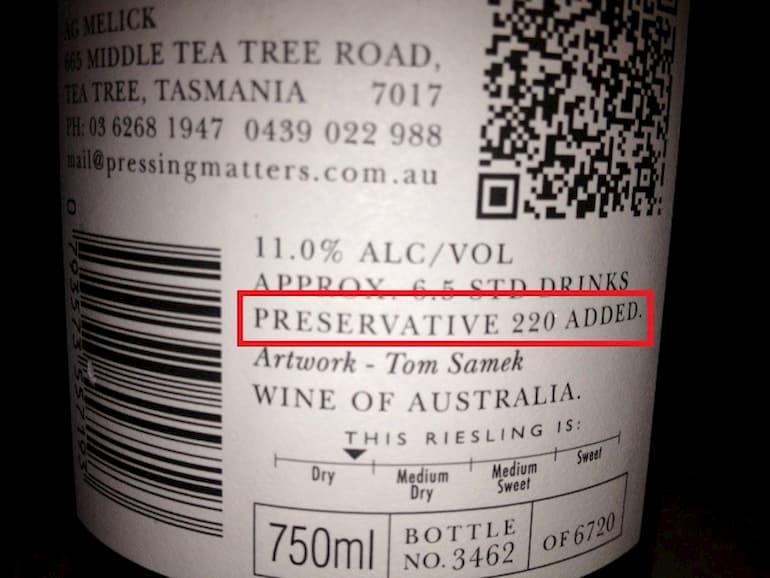
Living in today’s world has its pros and cons, but one of the biggest cons is the production of synthetic and chemically treated food and beverages. That’s one of the reasons why so many people are opting for the consumption of organic food and beverages, even when it comes to wine. Although organic wines have been present on the Australian market for quite some time now, it was in 2014 when the consumption of organic wine significantly increased. Since then, more and more Aussies have started to turn to organic wines. That’s the reason why more winemakers are devoting themselves to this type of wine production. And while each Australian state is leading in something, according to the 2018 Australian Organic Market Report, South Australia is the leading state in the production of organic red and white wines according to the number of winemakers.
What is Natural Organic Wine?

The truth is that natural wines have existed since ancient times. At that time, both wines – organic red and organic white wine were not made with the use of today’s commercial yeast, enzymes, vitamins, sulphur dioxide, powdered tannins, cryoextraction and reverse osmosis. Instead, they were made only from quality crushed grapes grown with the help of biodynamic and organic practices and the experimental methods of viticulture. Whether in the past or today, once harvested, the grapes are left to ferment in terracotta pots or oak barrels. Usually, oak barrels are mainly used for the ageing process and not for the flavouring. When made without the use of any additives or interventions, both of these wines – red and organic white wines can offer exceptional fruit purity. When it comes to the appearance and texture, organic wines are cloudy with a dusty yellow hue which resembles the look of organic apple cider juice. Wine connoisseurs say that the taste and scent of these wines are more vinous, sour and pulpy. Nowadays, you can find a great number of organic wines on the market, but to be sure that the one you’re drinking is truly organic, it must be certified and should comply with the Australian Certified Organic (ACO) and National Association for Sustainable Agriculture, Australia (NASAA).
Does Organic Wine Have Preservatives?
During the wine production, filtration is kept to a minimum, as well as the use of sulphur dioxide and some other additives. However, these days almost all types of organic wines have an added preservative as protection against bacterial spoilage and oxidation. Out of all types of preservatives, the most commonly used one in organic wines is sulphur dioxide, also known as preservative 220.
What is Preservative 220?
The use of sulphur in wines dates back to Roman times when this preservative was burnt in storage vessels prior to filling them with wine. The purpose of sulphur used in wine is simple – to prevent wine spoilage. The reason why winemakers use precisely sulphur dioxide in wines is because of its anti-oxidant and anti-microbial properties which can inhibit the growth of yeast and bacteria and oxygen. The level in sulphur dioxide is measured as parts per million (ppm) or milligrams per kilogram (mg/kg). According to the Australian Food Standards, the maximum allowed use is 250ppm for dry wines and up to 300ppm for sweet wines or 35g/L+.

In organic and biodynamic wines, the total use of sulphur dioxide should be under 120ppm. However, this can be different for white and red wines. When taking into account one’s health and allergies, it’s best to opt for sulphur-free wines. Even wines for which there was no adding sulphur dioxide in the winemaking process can still contain some minimal quantities. This is because sulphur dioxide can also be as a part of the natural wine fermentation process. So, with all of this in view, a preservative-free wine is one that contains 0pp of detectable sulphur dioxide. However, in reality, this term preservative-free wine is used to indicate that no sulphur dioxide has been added to the wine. According to the Labelling Laws in Australia, if the detectable amount of preservative is less than 10ppm, the preservatives shouldn’t be mentioned on the wine label.
Is Preservative 220 Bad for You?
The presence of sulphur dioxide at higher levels can only affect the wine’s aroma, however, experienced wine drinkers can sense the sulphur in the taste as well. For instance, unlike Australian wines that contain a lower level of sulphur dioxide, French wines are known to have high sulphur dioxide levels and it seems that French locals are accustomed to it and have developed a taste for it.
What is Preservative 224?
Preservative 224 or also known as potassium metabisulphite is a food additive used in both wine and food industry. And just like sulphur dioxide, its main purpose is to prevent the growth of wild microorganisms and it acts as an antioxidant – it is very useful when it comes to protecting the wine’s colour and flavour.
In wines, a high dose of preservative 224 would be 3g of potassium metabisulfite per 22 -23-litre bucket of must (yielding roughly 75 ppm of SO2) prior to fermentation; then 6 g per 22-23-litre bucket (150 ppm of SO2) at bottling. Most commercial wineries do not add more than 30 ppm at bottling, however, this depends on the country’s regulations.
Does Organic Wine Give You a Hangover?

When it comes to wine hangovers, people usually blame sulphites for this. However, experts say that it’s usually the tannins, histamines and alcohol content that causes exacerbated hangovers in people.
Where to Buy Organic Wine?
While you can find organic wines in many offline stores, the easiest and the most convenient way to shop for organic wines is online. You can do it from the comfort of your home, from the office or when drinking your coffee at some cafe. Just pay attention whether the store is trustworthy and the wine certified under the Australian Food Standards.
Since that merry time of the year is around the corner, you can celebrate it with your closest with a nice bottle of organic white wine. Perfect for the Australian Christmas time. But for all those of you who plan to have a white Christmas this year, you can celebrate it with a hot spiced red wine. If you want to go completely healthy, you can ditch the brown sugar for stevia or xylitol which are considered to be some of the healthiest sugar substitutes.
